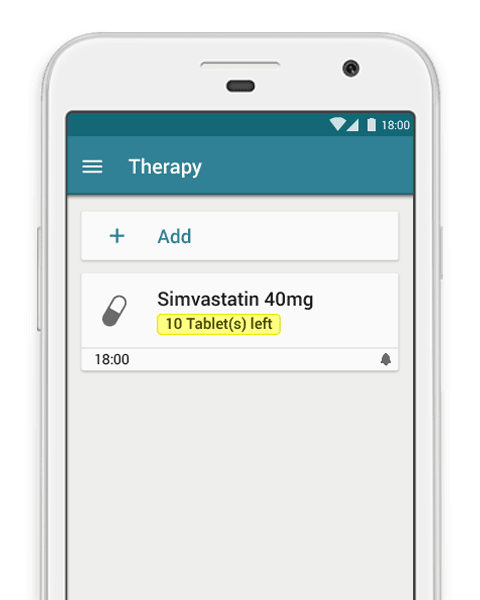Lipoproteins can be thought of as vehicles transporting passengers, cholesterol, around the body. While the good drivers – high-density lipoproteins – safely drop their passengers off in the liver, the bad ones – primarily low-density lipoproteins – have a tendency to cause traffic jams en route to the heart. Measuring levels of “bad” Low-Density Lipoprotein Cholesterol (LDL-C) is regularly used as a tool for clinicians to evaluate patients’ cardiovascular risk. However, it has long been suspected that calculating Non-High-Density Lipoprotein Cholesterol (Non-HDL-C) is more effective. So, what is non-HDL cholesterol? How does it differ from LDL cholesterol? And why is it not as commonly used as LDL cholesterol by clinicians?
Important acronyms in this article:
LDL-C - Low-Density Lipoprotein Cholesterol
HDL-C - High-Density Lipoprotein Cholesterol
Non-HDL-C - Non High-Density Lipoprotein Cholesterol
LDL-P - Low-Density Lipoprotein Particles
sd-LDL - small, dense Low-Density Lipoprotein
VLDL - Very Low-Density Lipoprotein
What is Non-HDL Cholesterol?
Cholesterol is a fatty substance found in every cell in the human body and performs a number of functions that are crucial in keeping you alive.
The terms “good” HDL-C and “bad” LDL-C don’t actually refer to cholesterol itself (cholesterol is just one substance) but to the lipoproteins that carry cholesterol through the bloodstream. Lipoproteins also carry another fat, called triglycerides, and a number of other substances including proteins.
There are other forms of lipoproteins such as very low-density lipoprotein (VLDL) and chylomicron, each of which carries different ratios of the substances mentioned (VLDL, for example, carries high levels of triglycerides).
Your total cholesterol level reflects the amount of cholesterol being carried around by all types of lipoproteins. Total cholesterol is, on its own, a rather useless metric because your HDL-C level cannot be too high. It actually protects you from heart disease by collecting excess cholesterol and transporting it to the liver, where it is broken down and disposed of. So, it is important to know the make-up of the total cholesterol level.
Finding the non-HDL cholesterol (non-HDL-C) level is simply a matter of removing the HDL-C level from the total cholesterol level. Because HDL-C is the only “good” type of cholesterol, the non-HDL-C account for all the different forms of “bad” cholesterol, rather than just LDL-C.
How is Non-HDL Cholesterol Different from LDL Cholesterol?
While non-HDL-C refers to your total cholesterol minus the “good” HDL-C, LDL-C only reflects levels of that specific type of lipoprotein. LDL-C is often used to help evaluate cardiovascular risk, but just how useful is it?
LDL Cholesterol and LDL Particles
LDL-C is associated with the acceleration of atherosclerosis – the build-up of fat on the inside of artery walls that can eventually starve the heart of oxygen and lead to serious complications such as heart attacks.
Thus, high LDL-C levels are considered a serious cardiovascular risk. The level at which LDL-C is considered high is not fixed but is usually estimated based on other risk factors such as age and medical history. For a person considered to be at high risk of heart disease, for example, a clinician may set a target of 70 milligrams per deciliter (mg/dL) or below, while for someone at low risk, 130 mg/dL may be deemed acceptable.
Other posts you may be interested in on the MyTherapy blog:
- Alcohol and Cholesterol: Can a Drink a Day Really Help Your Heart?
- 4 Surprising Signs of Heart Diseases You Should Not Ignore
However, the effectiveness of using LDL-C levels to help determine cardiovascular risk – although common practice – has long been questioned.
One reason for this is because LDL particles (LDL-P) that carry cholesterol come in different sizes. Some people have higher levels of small, dense LDL particles, known as sd-LDL, while others have large LDL particles. This means that even though two people may have the same LDL-C level, the number of LDL particles in which it is stored is different depending on their size. This is reflected in one’s LDL-P level.
To borrow an analogy from Medical News Today, a bucket filled with golf balls is just as full as a same-sized bucket filled with tennis balls, but the number balls will be greater.
Similarly, people with a higher sd-LDL level have a greater number of particles than people with large LDL particles, even if the overall LDL-C level is the same.
LDL-P levels have been found to be a more accurate predictor of cardiovascular ‘events’ and more closely related to the development of atherosclerosis.
A number of studies have found that people with high levels of sd-LDL are at a threefold greater risk of heart disease than people with high levels of large LDL particles.
The Benefit of Non-HDL Cholesterol
Like LDL-C, non-HDL-C is not capable of directly determining LDL-P levels.
However, because it takes into account a greater number of factors, including lipoproteins that carry triglycerides, it has regularly been found to be a superior predictor of cardiovascular disease than LDL-C.
Similarly, non-HDL-C has been found to be a more accurate indicator of sd-LDL levels than LDL-C.
While LDL-P may still be the superior indicator of cardiovascular risk, the benefit of non-HDL-C is that it can be done with no additional cost or testing beyond a regular lipid profiling.
It is merely a different way of looking at values that already form part of a lipid profile, total cholesterol and HDL-C, and applying a simple equation.
Why is LDL Cholesterol Still More Commonly Used Than Non-HDL Cholesterol?
If non-HDL-C is a better indicator of cardiovascular risk than LDL-C and available with no additional cost or testing, the obvious question is: why is LDL-C still so commonly used instead?
That very question was addressed by the medical journalist, Larry Husten, in an article on MedPage Today.
In the article, Hudsen quotes an editorial from the New England Journal of Medicine, in which its author, Robert Heagele, writes that non-HDL-C is “stable and reliable at very low levels and regardless of whether patients are tested while fasting. Furthermore, the non-HDL cholesterol level integrates all atherogenic lipoproteins, correlates well with apolipoprotein B, and predicts cardiovascular risk better than the LDL cholesterol level.”
Although non-HDL-C and LDL-C often track closely, they diverge more prominently in people living with obesity, diabetes, and high triglycerides. For those people, non-HDL-C provides the greatest benefit over LDL-C.
However, it seems as though using LDL-C is so deeply ingrained in as common practice, that clinicians continue to do so even when the tools they use present non-HDL-C levels automatically.
While this may sound rather worrying, other medical professionals quoted by Hudsen defend this maintaining of the status quo. “Perfect,” says Jennifer Robinson of the University of Iowa, “should not be the enemy of good,” arguing that core physicians who do not use lipid values daily are used to dealing with LDL-C, and the benefit derived from moving to non-HDL-C is not enough to justify the confusion doing so may cause.
The justification behind such an opinion, it seems, it that lipid values (be it LDL-C or non-HDL-C) are but one of the markers used to determine cardiovascular risk. Other tests, such as electrocardiograms (ECGs/EKGs) and blood tests, along with other risk factors such as blood pressure, smoking, and obesity, can all be used to determine one’s cardiovascular risk profile.
The benefit of non-HDL-C over LDL-C, it can, therefore, be argued, is modest.
The debate is likely to rumble on as it has done for many years already. However, given that the populations for whom non-HDL-C provides the biggest benefits (people living with obesity, diabetes, and high triglycerides) are growing, perhaps more clinicians will move away from LDL-C and towards non-HDL-C in the years to come.
Take a look at some of the other posts on the MyTherapy blog:



